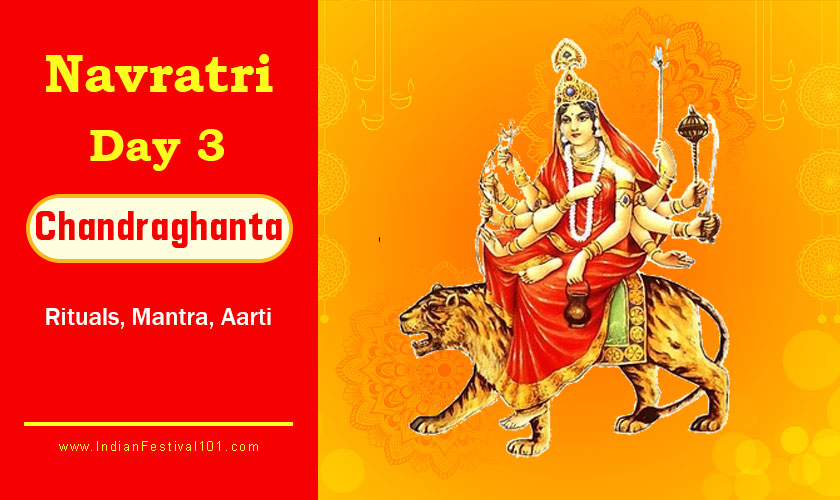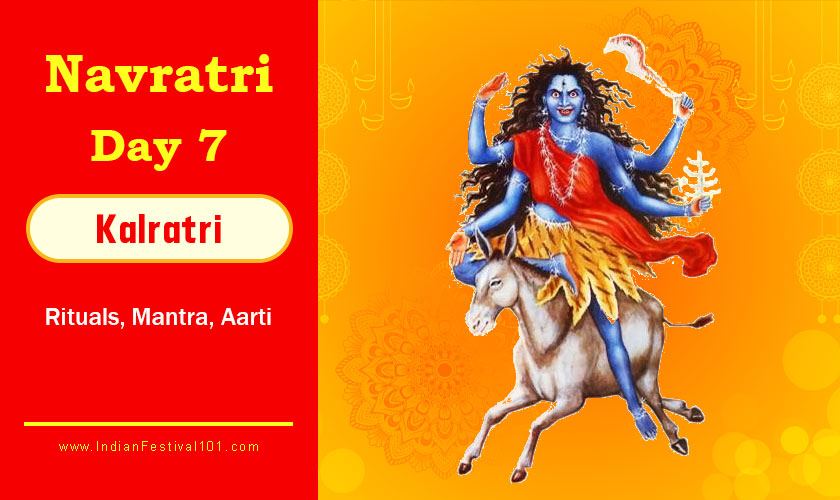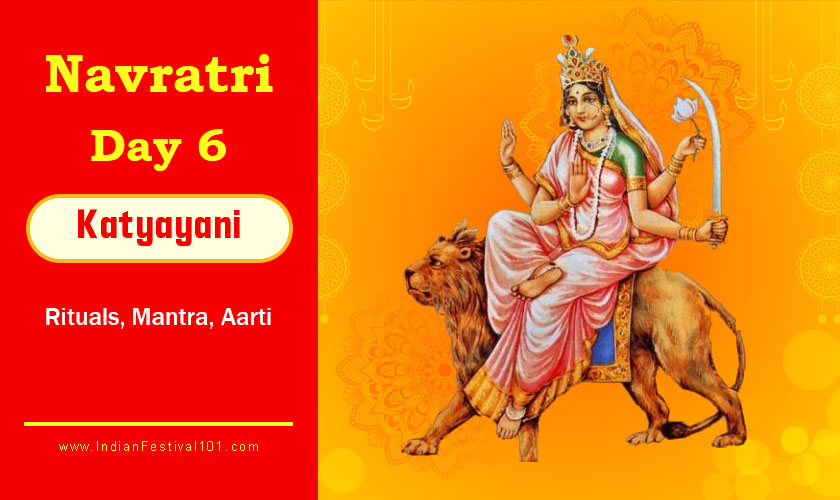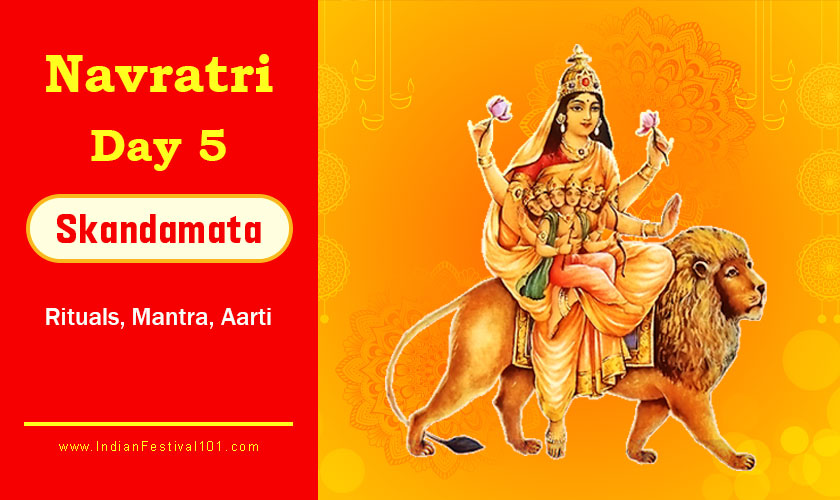The third form of Nav Durga, Maa Chandraghanta Is devoted on the third day of Navratri. Who is Maa Chandraghanta ? What is the story of Chandraghanta? What is the significance of the Navratri third day? Here’s everything you need to know about the third form of Goddess Durga. You can also find the mantra and aarti of Maa Chandraghanta here.

Who is Chandraghanta?
The third form of Maa Durga is Chandraghanta. She is married to Lord Shiva after Shailputri and Brahmacharini.
Maa Chandraghanta’s name, derived from her adorned crescent moon-shaped bell, reflects the luminous aspect of her character. Chandra + Ghanta, meaning supreme bliss and knowledge, showering peace and serenity, like a cool breeze on a moonlit night. Maa Chandraghanta adorns a half-circular moon on her forehead hence the name Chandraghanta. She is charming and bright. She looks golden in colour.
Devi Chandraghanta has 3 eyes and 8 hands holding weapons like Trishul, Gada, bow-arrow, sword, lotus flower, bell (known as ghanta), and water pot (Kamandal), and one hand remains in the mudras of gestures of boon giving and stopping harm.
Maa Chandraghanta rides a tiger or a lion as a symbol of bravery and is also known as Chandika and Ranachandi. Navratri’s 3rd night is worshipped to Maa Chandraghanta.
Significance of the Third Day of Navratri
The third day of Navratri carries immense significance in Hindu culture as it is dedicated to Maa Chandraghanta, the third manifestation of Goddess Durga. This day symbolizes the triumph of good over evil, courage over fear, and serenity amidst chaos. Devotees worship her to seek protection, inner strength, and balance in their lives. Her divine presence serves as a reminder that courage and grace can coexist and that embracing these qualities is essential on the spiritual journey. It emphasizes the value of maintaining inner peace and fearlessness when confronting life’s challenges. Thus, the third day of Navratri encourages devotees to embrace the duality of life and find harmony within.
Maa Chandraghanta Story
As the legend goes, Goddess Parvati was devastated after Lord Shiva said that he would not marry any woman. However, her sufferings overwhelmed Him and He agreed to the union. When Lord Shiva brought the wedding procession, Parvati’s parents were terrorized to see gods, mortals, ghouls, ghosts, goblins, and Aghories in the procession. When her mother fainted, Parvati took the form of her fearsome self and transformed herself into Maa Chandraghanta to save her family.
On being persuaded, Lord Shiva reappeared as a charming prince adorning jewels and the two get married. While she is a very serene being, when provoked, her fury could know no bounds. She is always in the fierce war posture, ready to take on evil and demons.
Maa Chandraghanta Mantra
Om Aim Hreem Chandraghantay Namah ||
Om Devi Chandraghantayayi Namah(108 times)
Pindaj Pravaarudhchandkopastrkairyuta |
Prasadam Tanute Madhyam Chandraghantetivishrutaa ||
Maa Chandraghanta Aarti
जय माँ चन्द्रघण्टा सुख धाम। पूर्ण कीजो मेरे काम॥
चन्द्र समाज तू शीतल दाती। चन्द्र तेज किरणों में समाती॥
मन की मालक मन भाती हो। चन्द्रघण्टा तुम वर दाती हो॥
सुन्दर भाव को लाने वाली। हर संकट में बचाने वाली॥
हर बुधवार को तुझे ध्याये। श्रद्दा सहित तो विनय सुनाए॥
मूर्ति चन्द्र आकार बनाए। शीश झुका कहे मन की बाता॥
पूर्ण आस करो जगत दाता। कांचीपुर स्थान तुम्हारा॥
कर्नाटिका में मान तुम्हारा। नाम तेरा रटू महारानी॥
भक्त की रक्षा करो भवानी।
Conclusion
Maa Chandraghanta, is the symbol of serenity and bravery. Her tranquil yet fierce demeanour signifies the power to vanquish negativity and protect her devotees. As Navratri progresses, we are reminded of the courage needed to overcome obstacles in our lives. Maa Chandraghanta’s presence serves as a beacon of hope and resilience, instilling the belief that even in the face of adversity, one can emerge victorious with unwavering faith. The third form of Maa Durga celebrates inner strength and the ability to confront challenges, inspiring us to stand steadfast in the pursuit of our goals.
Also Read-
Shailputri – 1st Day of Navratri
Brahmacharini – 2nd Day of Navratri
Kushmanda – 4th Day of Navratri
Skandmata – 5th Day of Navratri





